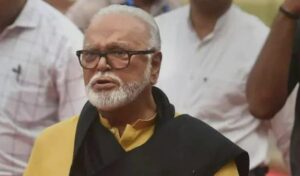
Fadnavis Cabinet Expansion Implements Two-and-a-Half-Year Ministerial Term Formula
Mumbai, 16th December 2024: It is common to see protests and dissent from MLAs left out of the Council of Ministers after oath-taking ceremonies. However, the cabinet expansion for CM Devendra Fadnavis in Nagpur on Sunday stood out due to the introduction of a strategic two-and-a-half-year tenure formula, which brings several advantages to both Fadnavis as Chief Minister and as a BJP leader.
On Sunday, 39 MLAs took their oath as ministers in Nagpur, with 19 from the BJP, 11 from the Shiv Sena, and 9 from the NCP. The new ministers have been informed that their positions will not last for the full five-year term. Instead, they will relinquish their roles after two and a half years to allow others to take their place. Fadnavis explained that the performance of all ministers would be assessed, with decisions on their continuation based on their evaluations.
While the mid-term removal of ministers is not unprecedented, often due to corruption allegations or intra-party conflicts, this marks the first formal implementation of such a policy.
This concept, originally proposed by the BJP, has been supported by Deputy CM and Shiv Sena leader Eknath Shinde. Shinde told reporters that many Shiv Sena MLAs are capable of serving as ministers, and this new arrangement gives them a chance to join the government. Many Shiv Sena MLAs in Shinde’s previous government had awaited cabinet inclusion, but the expansion was delayed, leading to disappointment. Several of these hopefuls have now been inducted into the new cabinet.
The two-and-a-half-year term structure serves two main purposes: it ensures ministers remain under pressure to perform and discourages corruption, as any controversial minister could be removed. It also helps calm the discontent of those excluded from the current cabinet, keeping their hopes alive and reducing internal party dissent.
However, there is another risk. Those left out might attempt to undermine current ministers by labelling them as ineffective or corrupt, potentially leaking damaging information to the media and the Opposition, which could escalate internal party struggles. While the BJP’s disciplined structure is expected to manage such challenges, the Shiv Sena and NCP may face difficulties in maintaining order.
In the new council of ministers, 18 fresh faces have been added, while 12 former ministers, including prominent figures like Sudhir Mungantiwar, Chhagan Bhujbal, and Dilip Walse Patil, have been dropped. Bhujbal has already expressed his disappointment, with his supporters protesting in Nashik. Narendra Bhondekar, a three-time Shiv Sena MLA from Bhandara, resigned from his party position after being excluded from the ministerial list, publicly voicing his dissatisfaction.

















